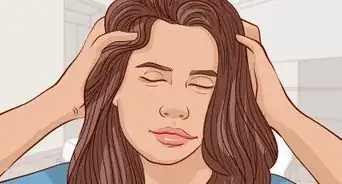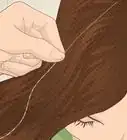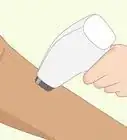This article was co-authored by Courtney Foster. Courtney Foster is a Licensed Cosmetologist, Certified Hair Loss Practitioner, and Cosmetology Educator based out of New York City. Courtney runs Courtney Foster Beauty, LLC and her work has been featured on The Wendy Williams Show, Good Morning America, The Today Show, The Late Show with David Letterman, and in East/West Magazine. She received her Cosmetology License from the State of New York after training at the Empire Beauty School - Manhattan.
There are 8 references cited in this article, which can be found at the bottom of the page.
This article has been viewed 48,678 times.
If you want to go natural but dread the idea of the big chop, don’t despair! It may take a little extra time, but you can transition from relaxed or treated hair without cutting it all off. To transition to beautiful, healthy natural hair, start by eliminating all chemical treatments and heat styling, and utilize protective styles while you let your hair grow out. Wash your hair a few times a month and be gentle when detangling your locks. Before you know it, you’ll be a pro at caring for your natural hair.
Steps
Transitioning Your Locks
-
1Stop relaxing your hair and using chemical treatments. Cancel your touchup and maintenance appointments because you won’t be needing them anymore! It can be a big adjustment to change your routine, especially if you’ve been relaxing your hair for a long time, but you can do it.[1]
- It may feel foreign to stop getting touchups but commit to going natural and resist the temptation to do anything to your hair that involves a chemical treatment of some kind. Instead, give yourself a manicure or do something fun to treat yourself.
-
2Avoid using heat on your hair. Heat styling can cause damage that makes your hair permanently straight, which would erase all the work you’re doing to transition it to its natural state. Let your hair air dry after you shower and use non-heat methods to style it, like foam rollers.[2]
- Heat styling tools include things like hairdryers, curling irons, straighteners, and hot combs.
- If you have a hard time not air-drying your hair, consider showering at night and then wrapping your hair in a silk scarf. This could make it easier for you to get ready in the morning and eliminate the temptation to dry your hair.
Advertisement -
3Use protective and low-manipulation styles to minimize breakage. These styles don’t require heat and can often stay in for 2 weeks to 2 months. They’re great to use while your hair is growing out! They also give your hair a beautiful style while masking the difference between your treated hair and your relaxed hair. Braids, wigs, and twists are great options.[3]
- If you opt for a weave, have it sewn into your hair rather than glued. The glue can damage your hair when it’s finally removed.
- Look into doing a high bun updo, bantu knots, a halo braid, space buns, boxer braids, and flat-twist pigtails for some fun styles.
- Avoid styles that put a lot of tension on your temples or the nape of your neck. They could break the sensitive new growth and slow down your transition process.
-
4Trim your hair every 4-6 weeks as you transition to get the right length. Even though you’re not doing the big chop, you still need to gradually trim away your treated hair to fully transition to natural hair. This doesn’t have to be a big trim—just 1⁄4 to 1⁄2 inch (0.64 to 1.27 cm) at each trim should be enough to keep your length the same while slowly getting rid of your treated hair.[4]
- You can trim the ends of your hair yourself after you shower, or have a professional at a salon do it for you.
Did You Know? Hair grows about 1⁄2 inch (1.3 cm) per month. If you let your hair grow for an entire year, it should grow about 6 inches (15 cm)[5]
-
5Be patient and give your hair lots of time to transition. It may take anywhere from 4-18 months for your hair to fully transition, just depending on how fast your hair grows and how long it was to begin with. It can feel like a long time, but stick with it! You’ll love how your natural hair looks and feels once you’re done.[6]
- Remember, you only have to go through this transitioning process once. After that, you just need to care for your natural hair.
- If you find yourself wondering if it's worth it, try creating an inspiration board full of pictures of people with natural hair that you love. This can be a great way to remind yourself of why you’re doing what you’re doing.
Washing and Moisturizing Your Hair
-
1Shampoo your hair every 7-14 days so it doesn’t dry out. Washing your hair less frequently will keep it from becoming brittle and more susceptible to breaks. Use a shampoo specifically made for natural hair for the best results.[7]
- Look for a sulfate-free shampoo. It’ll cleanse your hair but won’t strip away its natural oils.
- Use warm water when you shampoo rather than hot water. The warm water will open up your cuticles so your hair can get clean.
- You may find that you need to wash your hair more or less often, and that’s okay! Everyone is different, and what is best for your hair might look a little different.
-
2Let the water fully saturate your hair before you add any shampoo to it. Use warm water so your hair cuticles start to open up, and simply stand under the showerhead for 3-4 minutes letting the water run through your hair. Avoid rushing into the shampooing process—it won’t work as well if all of your hair isn’t damp before you begin.[8]
- If you need to, flip your head over to get the underside of your hair wet, too.
- Try playing music while you shower and let your hair soak in the water for the duration of one entire song. This can help you determine how long it has been without actually having to track the time.
-
3Use a conditioner after you shampoo to give your hair extra moisture. Choose a deep conditioner made for natural hair. Work it through your locks, starting at the bottom and moving your way up toward the roots. Follow the instructions on the bottle for how long you should let it sit before you rinse it out.[9]
- Look for moisturizers that have shea butter, coconut oil, argan oil vitamin E, sunflower oil, or even olive oil. These are all wonderfully hydrating ingredients.
Tip: When you do rinse out the conditioner, use cool water. It’ll close up your cuticles so that your locks retain the moisture from the conditioner.
-
4Co-wash your hair with conditioner between shampoos if needed. This is a great way to “wash” your hair between your regular shampoos without damaging your hair; it’s a useful method if your hair gets dirty or greasy from working out or spending lots of time outdoors. Get your hair wet and apply conditioner to it. Completely coat the strands from tip to root. Massage the conditioner into your tresses and let it sit in your hair for at least 3-5 minutes before you rinse it out.[10]
- This method adds moisture to your hair without stripping away essential oils like shampoo tends to do. It’ll leave your hair feeling clean and soft.
-
5Apply a hair mask every 2-3 weeks to deep-condition your locks. After you shampoo your hair, use a store-bought or homemade mask. Apply the conditioner to your hair, starting at the bottom and working your way up to the roots. Use this time to gently detangle your hair with your fingers. After the mask has been applied, wrap your hair in a towel for at least 30 minutes before you rinse the mask away with cool water.[11]
- This is a great way to hydrate your hair, especially as it is transitioning to its fully natural state. If you notice your hair is getting dry and brittle between washes, increase how frequently you do a mask. If you need to, do one once a week.
- You could even plan on doing a hair mask every time you wash your hair, especially if you have dry or brittle locks.
Caring for Natural Hair
-
1Use a sealant to trap moisture in your hair if it's particularly dry. You can buy a sealant from the beauty store, or you could use something natural, like vegetable oil, coconut oil, shea butter, cocoa butter, or argan oil. After you have washed and conditioned your hair, either spray or massage the sealant onto your hair. Let it air dry. The sealant creates a barrier between your hair and the elements; it’s great to use if you’re concerned about breakage or frizziness.[12]
- If you’re using a butter or liquid oil, start with just 1 teaspoon (4.9 mL). You can add more to your hair if it's needed, but if you use too much, your hair could end up looking greasy instead of healthy and shiny.
-
2Protect your hair overnight by using silk pillowcases or scarfs. Cotton is going to cause too much friction and can cause excessive breakage over time. If you don’t have silk pillowcases, use a silk scarf and wrap it around your hair before you go to bed every night.[13]
- Don’t forget to wash your pillowcases or scarves once every 7-10 days to keep them clean.
Tip: Satin also works well for this purpose.
-
3Limit how often you style your hair with heat to keep your locks healthy. Once your hair has made the transition to natural, it’s still important to steer clear of high-heat styling methods. Air drying your hair is the best option, but if you don’t have the time to do that, use the lowest setting on your hairdryer to introduce the least amount of damage to your hair.[14]
- If you do use heat to style your hair, use a heat protectant at the same time.
-
4Comb your hair when it’s damp for the gentlest way to detangle it. Use a clean, wide-toothed comb. Start at the bottom and work your way up to the root. Don’t pull on the comb if it gets stuck; instead, use your fingers to gently pull apart the tangle and them resume using the comb.[15]
- Never comb your hair when it’s dry. It will damage your hair and cause it to break at mid-shaft, which isn’t good for your hair growth.
- If you’re struggling to detangle your hair when it's damp, use a conditioner to add some extra lubricant to your curls.
-
5Stay hydrated and eat a balanced diet to improve the health of your hair. Add beans, leafy greens, nuts, eggs, carrots, milk, whole grains, chicken, and salmon to your weekly rotation. These foods all contain essential nutrients that will improve the health of your hair. Try to drink at least 8 glasses of water every day; drink more if you’re exercising or sweating a lot.[16]
- Healthy hair does start from the inside. If you combine a healthy diet with the right care methods, your hair will be in great shape!
Warnings
- Avoid using heat styling tools on your natural hair. They can change your hair permanently and make it much harder to achieve that natural look.⧼thumbs_response⧽
- Never get your hair relaxed or chemically treated when you’re trying to go natural. This will delay your progress, possibly causing it to take several months longer than it has to.⧼thumbs_response⧽
References
- ↑ https://youtu.be/8ueQdXgljH8?t=94
- ↑ https://youtu.be/8ueQdXgljH8?t=111
- ↑ https://youtu.be/8ueQdXgljH8?t=173
- ↑ https://www.self.com/story/transition-tips-for-natural-hair
- ↑ https://www.curlcentric.com/going-natural-without-the-big-chop/
- ↑ https://www.curlcentric.com/going-natural-without-the-big-chop/
- ↑ https://www.curlcentric.com/natural-hair-101/
- ↑ https://www.curlcentric.com/natural-hair-101/
- ↑ https://www.curlcentric.com/natural-hair-101/
- ↑ https://www.self.com/story/transition-tips-for-natural-hair
- ↑ https://www.teenvogue.com/story/how-to-grow-your-natural-hair
- ↑ https://www.curlcentric.com/how-to-grow-natural-hair/
- ↑ https://www.teenvogue.com/story/how-to-grow-your-natural-hair
- ↑ https://www.curlcentric.com/how-to-grow-natural-hair/
- ↑ https://www.teenvogue.com/story/how-to-grow-your-natural-hair
- ↑ https://www.curlcentric.com/how-to-grow-natural-hair/




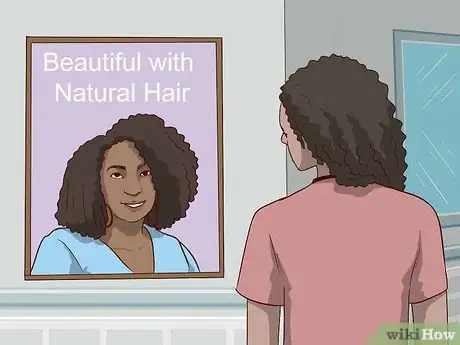



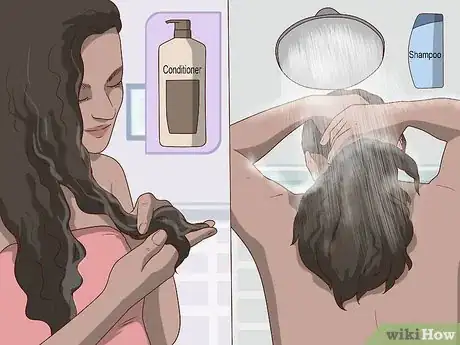







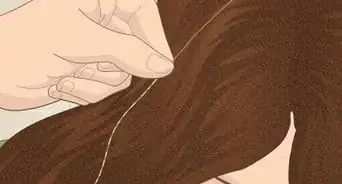

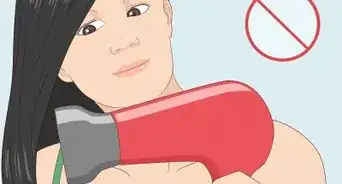
-Step-1-Version-8.webp)
